If you arrive to from east Java by ferry then the first Balinese port of entry is Gilimanuk on the outskirts of West Bali National Park.
From here you can continue your journey east to Labuhan Lalang from where you can take a small boat to the amazing underwater world of Menjangan Island.
The lovely Pemuteran village is located down the road where you’ll find mostly small-scale hotels and where you can escape the hordes of tourists.
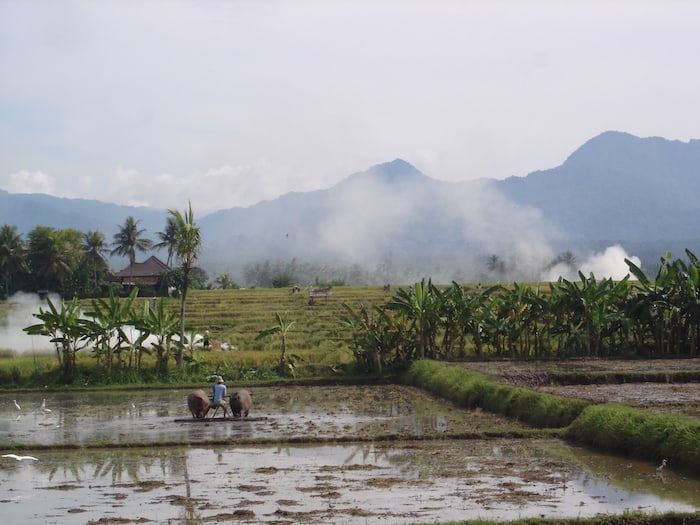
The other road south from Gilimanuk to Denpasar is 129 km long. It is one of the busiest on the island. Long strings of trucks loaded products and building materials drive here all day long.
Even though it’s a busy road there’s still enough to take in. The astonishing sea views from the black sand beaches, the high waves at Medewi Beach, the beautiful rice terraces with shapes of Bali’s second highest mountain, Mount Batukaru (2276 m) in the background makes this route worth every mile.
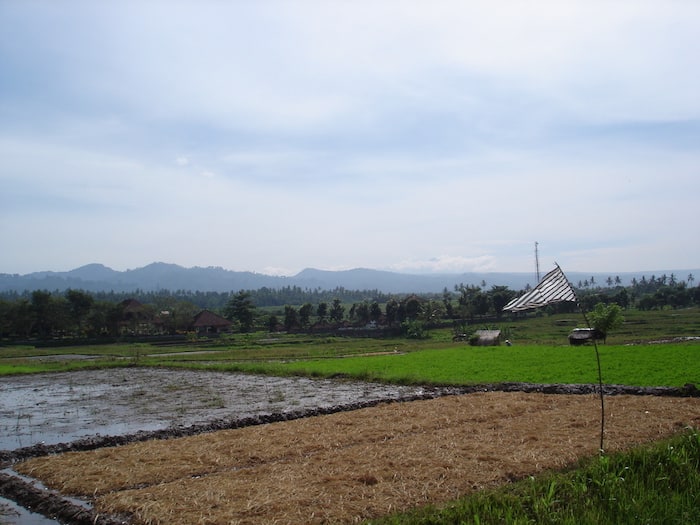
The influence of Javanese people is recognisable in the villages along the west coast with mosques and stalls selling Javanese food. This area is the less populated area on Bali. Most of its inhabitants are either fishermen, farmers or work on the many coconut plantations.
West Bali National Park
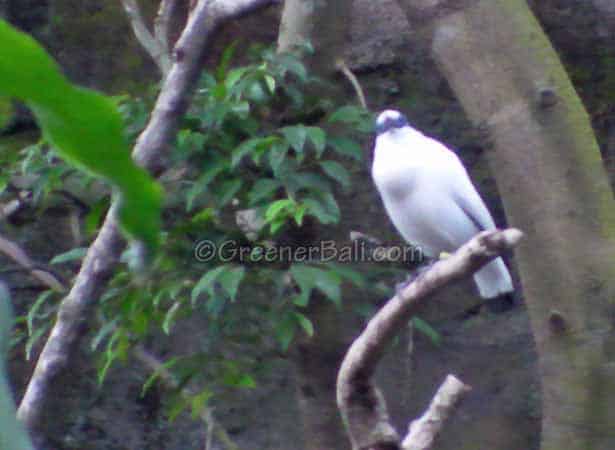
Taman Nasional Bali Barat (West Bali National Park)
This is Bali’s only national park and measures 19000 ha. The park consists of monsoon forest, virgin tropical forest on the slopes of Mount Klatakan, mangroves and coral reefs at the north-western coast.
It is the most important conservation area in Bali and was established an Indonesian National Park in 1941 to protect the Bali Starling (Leucopsar rothschildi)
Nowadays it’s very hard to find the Bali Starling in the wild yet it is still a paradise for bird watchers. You can do 1-2 hours or 7- hours hikes however you are not allowed to enter the park without a guide.
The park’s headquarters are located in Cekik or Labuhan Lalang, where you can arrange permits. This is also the place for some of best snorkeling and diving spots in Bali. The coral around Menjangan island is full of marine life. You can get your permit and guide at Labuhan Lalang too.
Temples in west Bali
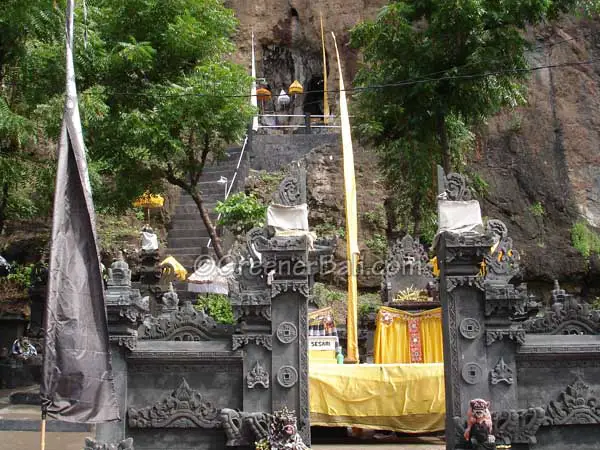 Pura Agung Pulaki temple
Pura Agung Pulaki temple
This 16th century temple complex is located just west of Pemuturan. It is considered Pemuteran’s key temple. This Hindu temple is devoted to the most influential religious leader, Danghyang Nirartha.
It’s built along and within the black-stone mountain cliffs. Best time to see the temple is during sunset. It isn’t a popular temple to visit but if you are Pemuturan then it’s nice to pop in and have a look.
Across the street there is another temple called Pura Pabean which is devoted to Nirartha’s wife and fishermen come here to pray for safe journeys.
Pura Gede Perancak
Perancak is home to a small white temple, Pura Gede Perancak located at a lagoon and made out of coral. The temple is dedicated to the priest Danghyang Nirartha, who fled Java after the fall of the Majapahit empire.
He is responsible for introducing Hinduism rituals and events and makes Bali the religious mixture what it is today with their beliefs in Hindu gods and animistic spirits.
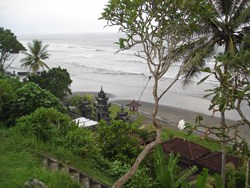 Pura Rambut Siwi (Temple of the Worshipped Hairs)
Pura Rambut Siwi (Temple of the Worshipped Hairs)
Traveling further to the south you find the most important temple of the area, Rambut Siwi temple near Yehembang village. Rambut Siwi means ‘holy hair’. The Balinese claim that the priest Nirartha cut his hair here and left it in a shrine in 1546.
It is easy to see why Nirartha built a temple here. The view on the black volcanic sands on one side and the rice paddies on the other side is just magnificent.
Other Sights in West Bali
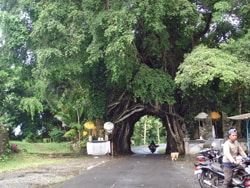 Bunut Bolong Tree
Bunut Bolong Tree
Bolong means ‘hole’. When you see this magnificent Banyan (Ficus benghalensis) tree at Manggissari village you know where it gets its name from. The tree is grown in a way that the Balinese have managed to build a road right through it.
The tree is located along the small scenic road from Pekutatan towards Pupuan village along clove plantations and tropical forests.
Buffalo races in Perancak and Negara At these villages you have the opportunity to see the buffalo races along a 4km long race track. It takes place after the rice harvest, which is
every second and third Sunday in September and October.
The local government organises these races which is held between two clubs. It starts early in the morning at 6 am before the buffaloes get lazy from the heat of the sun. Only the best and most beautiful bulls are allowed to participate in the contest.
The spectators are treated with a parade where the bulls and their jockeys show their colourful decorations and outfits. After this the bull’s decorations are removed and the jockey brings his two bulls into position. Every pair of bulls pulls a two-wheeled cart on which the jockey has to find his balance.
To gain speed he twists the buffalo’s tail and hits him with a small whip. The huge bulls can accelerate up to 80 km/hour during this race. A panel judges them on on their beauty, style, colour, power and of course speed.
I heard it through the grapevine: On the main road between Pemuteran village and Lovina beach against the slopes of mountains you can see the small signs ‘Hatten Wines’.
This is the only vineyard in Bali since 1994. Here local farmers grow the local Propolinggo Biru, the French table grape Alphonsel-Lavallee and Belgia grapes.
The wines are destined for the tourist market on Bali only. You might be surprised to find a vineyard on a tropical island. However the vineyard is able to use a right technique and harvests take place continuously in 120-day cycles.

